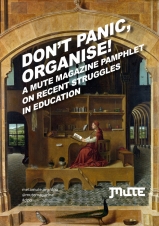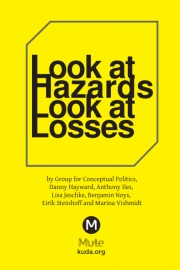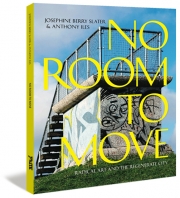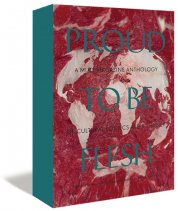Announcement: How to resist and object to Conditions of the Present?
° How to resist and object to Conditions of the Present?, 16 October – 7 November 2009
Opening:15 October, 19.00 –21.30
Project curator: Hedwig Saxenhuber
Participant artists:
Kaszás Tamás / Toamash Koasash
Close Up > Intro:
The exhibition How to resist and object to Conditions of the Present? demonstrates fragments of ideas for antagonistic systems based on the work of two different artists. In his visual ideology, Kaszás Tamás examines socialist design and drafts new forms to express transformation. Toamash Kasash finds approaches to a possible solution in the work of the American transcendentalist Henry David Thoreau that represent a refusal to conform to a totalitarian lifestyle under capitalist conditions instead of a panic flight from the world.
Kaszás Tamás
Symbol rehababout formalist studies on the heraldry of the socialist countries
”Utopias do have their own value - nothing can widen the imaginary horizon of human possibilities more – but as determinant/guider of behaviour it can literally prove to be fatal. ‘Things cannot be motionless’ (Herakleitos)“ – Erzsébet Szalai
Kaszás Tamás spent his childhood in pseudo-socialist Eastern Europe. At the time, life was nice for a child – at least, on the surface of things. Clear ideas and straight messages had been mediated through fine decorative elements of the system. He liked those symbols, posters and pictures, prepared with a progressive design. Their optimism and the picture of the future that was projected through them fascinated him, even though the props collapsed since then and the ideas were replaced by nothing that could fascinate him again.
According to Kaszás, he saw that there was nothing real behind these pictures, as fakes they were just meant to cover the generally wrong. Yet that energy what he got through them was real; mentally, it had such a positive effect on him. Even today, whenever he looks at them without their historical connotation, he still feels the shining of a positive energy.
Many symbols became used and burned out during history. Often these worn out images are connected to ideas or values, which we still support in the present. Partly this is why he started an artistic rehabilitation program on exploited and abused symbols. He thinks that they might be useful also as models for thinking if we transform or combine them as a collage.
In this project, one section is based on the coats of arms of the socialist countries, the design of which does not follow the rules of traditional heraldry. Most of them are based, however, on a wreath motive. We can see them as complex emblems, which operate with diverse symbols.
We might see this practice as a merely aesthetic game, also as mere formalism. However, sometimes from formalism, out of its passionate desire towards purity and the state of perfection, utopian or political pictures can be created as well.
Toamash Koasash
This text below is an excerpt from the manifesto of a half fictional project, entitled Forest School, which is partly inspired by Thoreau’s well-known book: Walden. In this project, the artist tries first of all to collect and invent homemade tricks for an exile and survival in nature. Koasash wants to connect metaphysical and poetical issues to the topic and finally highlights these.
Forest School
I love nature because she is not a man. [free adaptation after Thoreau]
“In the Forest School not the animals are the ones who study, they don’t need education. It is neither a scout camp where the youth are taught to obey in safe natural parks. The Forest School is created by a small community of people, because these people to transpose their life gradually to the wilderness. They think that life can complete its richness only far away from modern society in the forests of high mountains to where it is difficult to get. They want to be prepared for the age after the total collapse, which is already heralded by the economical and ecological crisis today. When hordes of the survivors will fight for the few goods among the ruins of the cities, the wilderness will be shelter only for those who learnt it deeply. For this, it is not enough to know some hunters’ tricks, but the forests’ poetry has to be studied as well…”
Short bio:
Kaszás Tamás / Toamash Koasash
Tamás Kaszás employs in his installations both traditional and new media. The themes of his art are the social problems and the metahphysics of nature. He often works in collaborations with other artists, also with activists. He prefers to use recycled or cheap and environment-friendly materials.Though his artworks are realized in most cases in the field of the professional art scene, he researches the possibilities of art practices, which are out of the traditional context of art. He also participated in small autonomous groups and in the “green movement” in Budapest.
Since 2000, Kaszás has exhibited his work regularly in museums and galleries throughout Europe. In 2009 his works have been shown amongst others in the Mucsarnok/Arthall, Budapest and in Futura, Prague; in 2008 in the Macedonian Museum of Contemporary Art, Thessaloniki, Greece; at Projecto 270, organic farm in Portugal; and in the International Project Space, Birmingham; in 2007 in cooperation of the Museum Folkwang in the RWE tower, Essen and in the Liget Galéria, Budapest; in 2006 at SPACE, London, in the NBK, Berlin and in the WKV, Stuttgart.
supported by:
BM:UKKStadt Wien - Kulturabteilung MA 7
About us:Open by appointment only, admission free
Open SpaceZentrum für KunstprojekteLassingleithnerplatz 2A – 1020 ViennaAustria
(+43) 699 115 286 32
for more info: office@openspace-zkp.org
Open Space - Zentrum für Kunstprojekte aims to create the most vital facilities for art concerned with contributing a model strategy for cross-border and interregional projects on the basis of improving new approach.
Mute Books Orders
For Mute Books distribution contact Anagram Books
contact@anagrambooks.com
For online purchases visit anagrambooks.com






